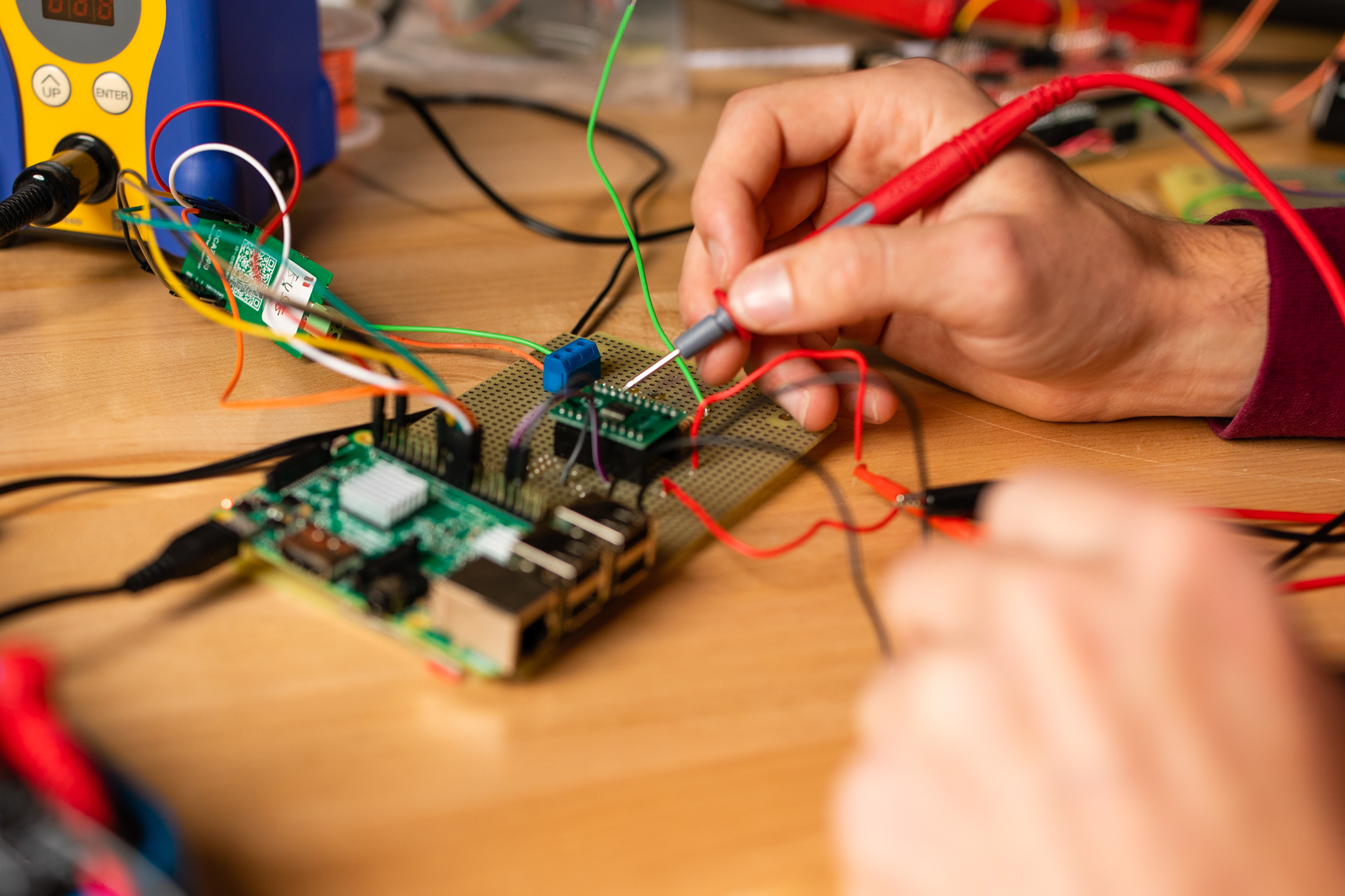Integrated Circuits & Systems

Effectively forming a nervous system for modern high performance electrical devices, Integrated Circuits & Embedded Systems define how efficient these devices are, how they interface with other technologies, how they interface with users, and how they adapt to changing conditions.
ECE researchers are unlocking our ability to compute like the brain, monitoring the health of farm animals, and powering the next generation of wireless communication. These advances can revolutionize the way we use our electronic devices, and will enable new areas of research, design, and innovation.
Associated Faculty
-
Bio Item
-
Bio Item
-
Bio Item
-
Bio Item
-
Bio Item
-
Bio Item
-
Bio Item
-
Bio Item
Highlighted Research
ECE research in very-large-scale integrated (VLSI) circuits and systems involves high-performance computing such as computer-aided design, artificial intelligence, and emerging nanodevices. We have been designing and fabricating analog neural chips for spiking recurrent neural networks, modeling and optimizing 3-D neuromorphic computing integrated circuits, designing and analyzing the energy- efficient circuits for green computing and renewable energy systems, and exploring the application of neuromorphic computing and deep learning to wireless communication and cybersecurity.
Recent ECE research in radio frequency integrated circuits has been exploring terahertz integrated radio and radar systems as they apply to wireless communications, biological and chemical molecule sensing, and safety and security applications. We are also pursuing digitally-enhanced RF design techniques to improve performance, power efficiency, and multi-functionality.
ECE researchers are investigating ways to prolong and source battery life with devices that gather and store the energy generated by everyday occurrences. These energy harvesters are integrated circuits powered by solar energy, thermal energy, vibrations, water flow, and hand cranks. We are also investigating methods to make them more efficient—reducing the power dissipation of energy harvesting circuits while extracting the maximum power from transducers.
Farming and agriculture have taken great strides into the technological future, and animal care and monitoring is no exception. ECE researchers are developing new wireless sensor systems that allow for automatic monitoring of farm animals and plants. These systems, which utilize a combination of visual, audio, and chemical sensors, can detect changes in the behavior, health, and environment of these organisms, providing early warning to farmers in the event of disease or malfunction. This monitoring can also provide predictive data, allowing farmers to better plan for environmental and health changes.
ECE researchers have demonstrated the first ever linear digital power amplifier operating in the mmWave spectrum. By using “edge-combining” to yield a switched capacitor power amplifier, this design has eliminated the need for the conventional components normally used to convert outputs. This technology lays the foundation for new digital-to-mmWave architectures for the next generation of wireless communications.
Miniaturization of electrical devices has always been restricted by power delivery and storage. Through research into energy harvesting, ECE engineers are developing new ways to keep small scale electronics powered—using ambient sources of energy wherever they are integrated. These energy sources include motion, body heat, and light energy. These advancements could eliminate the expensive, impractical, and sometimes dangerous task of replacing power sources in embedded systems, especially those used in biosensing or implanted devices, or located in extreme or difficult-to-access environments.
ECE researchers have been exploring a combination of AI computation and game design that allows users to input English readable sentences which the AI transforms into a playable game. This tool operates as both an AI teaching tool and a tool for game design and coding theory instruction.
Other Research Topics
- Bandwidth extension techniques for CMOS amplifiers
- Inverse design of RF and mmWave circuits
- RF/mmWave circuits and systems
- Neuromorphic computing
- VLSI circuits
- Energy centric wireless sensor node system for smart farms
- Power line energy harvesting
- Artificial intelligence-based integrated circuit design
- Neuromorphic computing for future wireless networks






.png.transform/s-medium/image.png)



